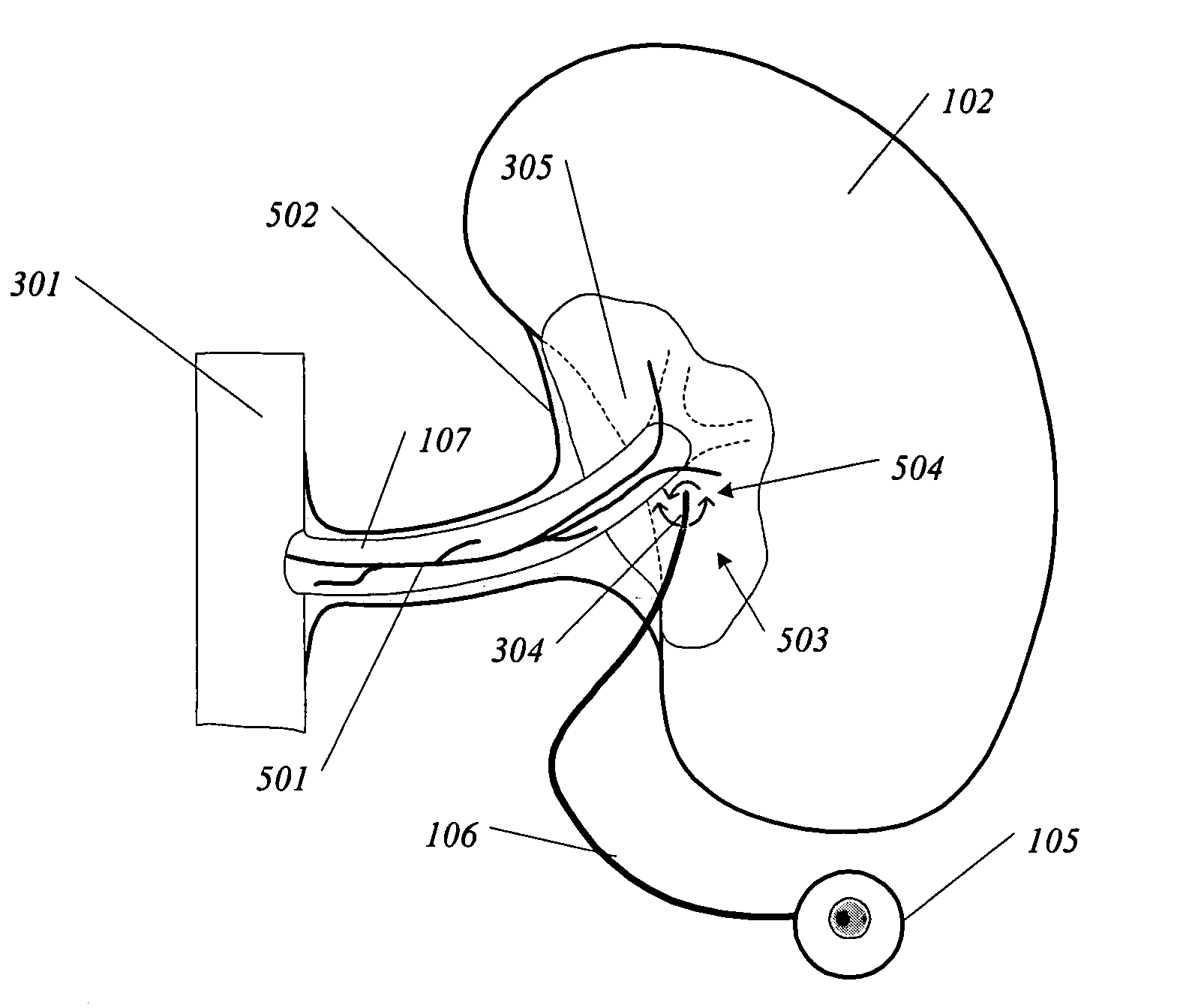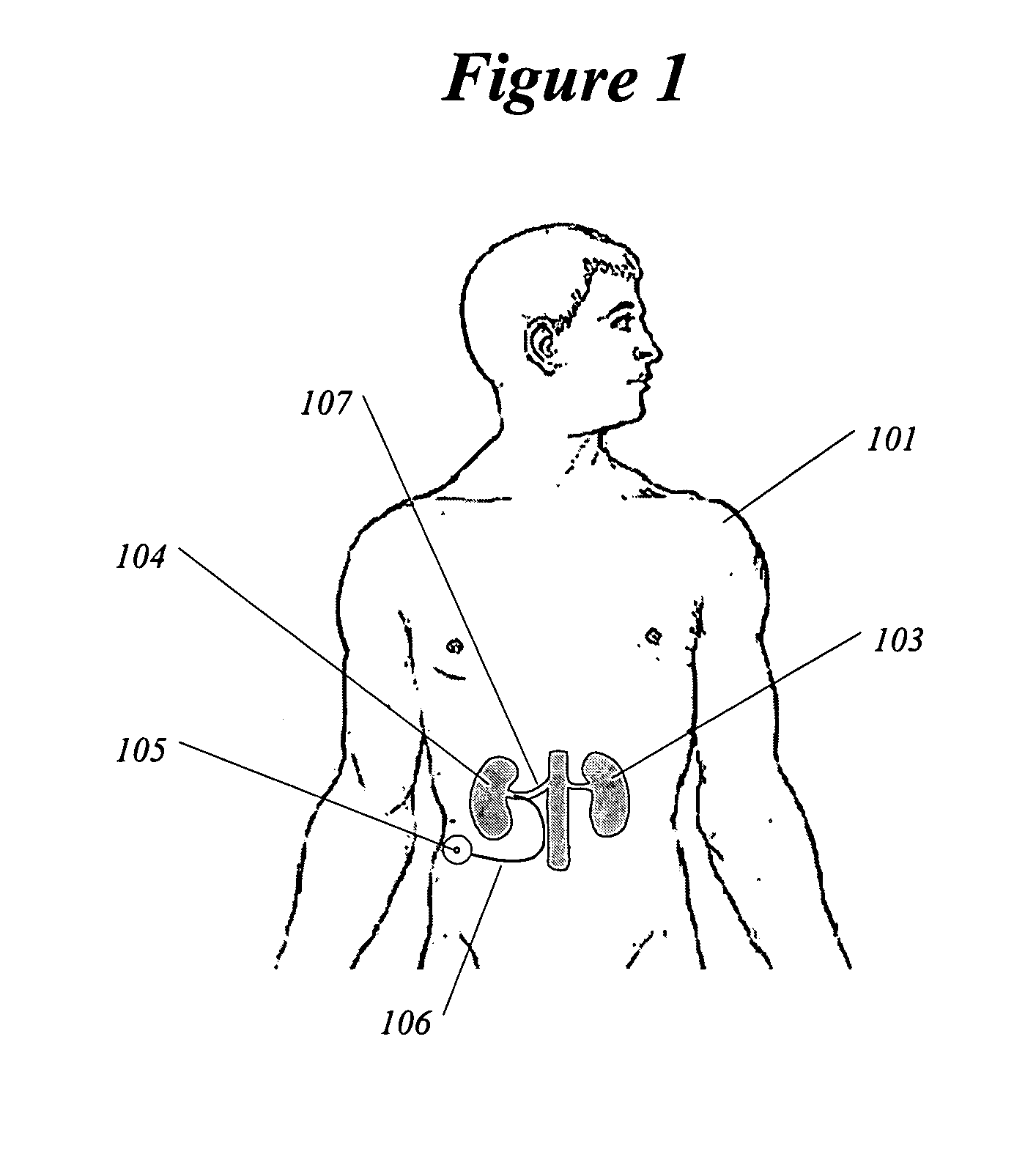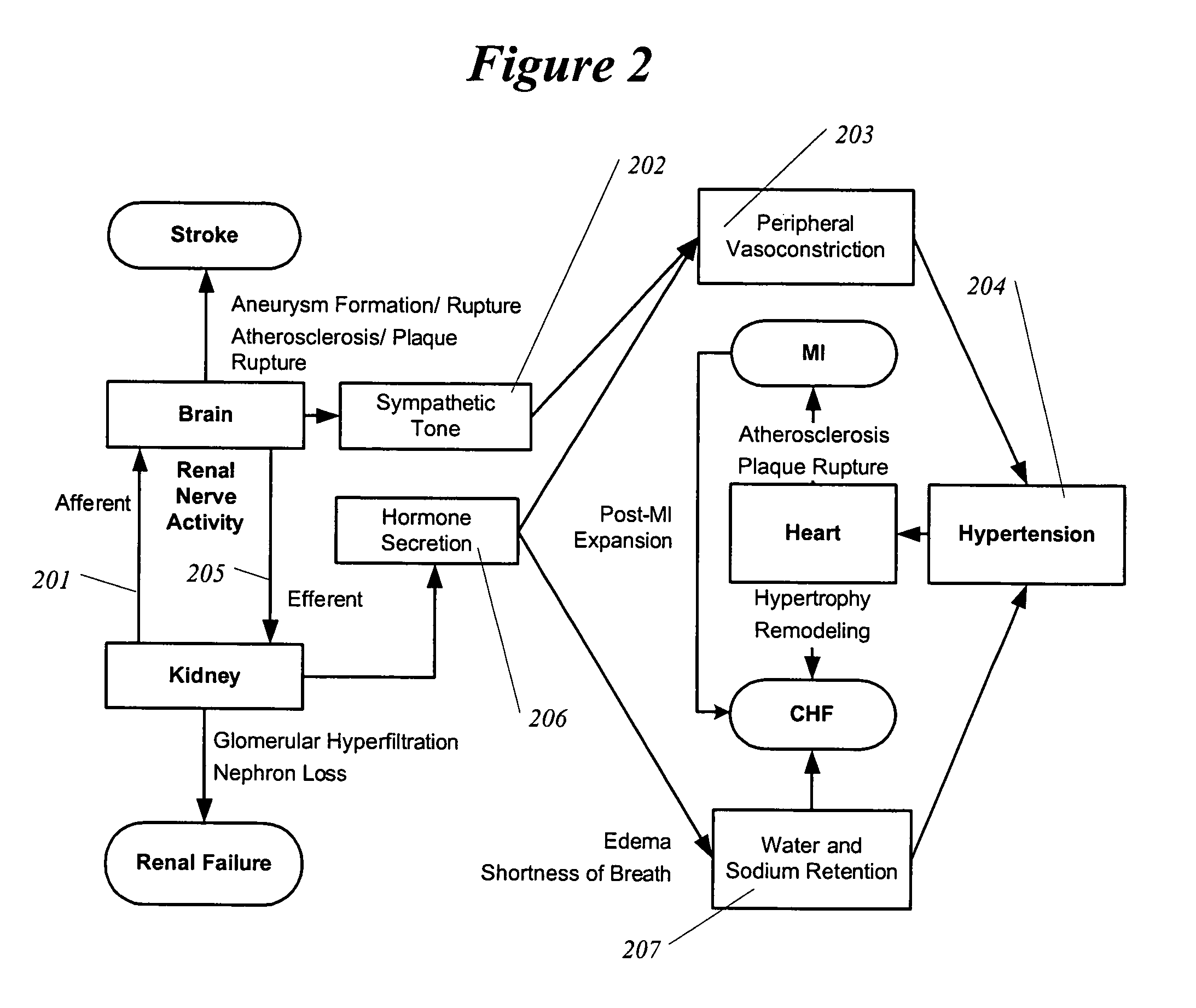Methods and devices for renal nerve blocking
a technology of renal nerve and blockage device, which is applied in the direction of heart stimulators, artificial respiration, therapy, etc., can solve the problems of loss of therapeutic effect, major surgery, pain and other serious side effects, etc., and achieve the resolution of fluid overload in chf, prolonging the life of chf, and reducing the risk of strok
- Summary
- Abstract
- Description
- Claims
- Application Information
AI Technical Summary
Benefits of technology
Problems solved by technology
Method used
Image
Examples
Embodiment Construction
[0036]For the proposed clinical use, the capability of the invention is to block the sympathetic activity of the renal nerve of the kidney by controlled local delivery of a nerve-blocking agent with the goal of improving the patient's renal and cardiac function. Elements of the invention are useful for blocking nerves for the purpose other than treating cardiorenal disease and can be applied in other anatomic locations.
[0037]A nerve blocking agent is a drug that reduces or blocks conduction of signals by renal nerves. The nerve blocking agents used can be selected from different groups including (1) local anesthetics, (2) ketamine (a well known sedative with nerve blocking properties), (3) tricyclic antidepressants such as amitriptyline, (4) neurotoxins such as tetrodotoxin and saxitoxin or (5) any other class or type of agent that transiently or permanently, partially or completely alters nerve conduction. The terms nerve blocking agent and nerve blocking drug are interchangeable.
[...
PUM
 Login to View More
Login to View More Abstract
Description
Claims
Application Information
 Login to View More
Login to View More - R&D
- Intellectual Property
- Life Sciences
- Materials
- Tech Scout
- Unparalleled Data Quality
- Higher Quality Content
- 60% Fewer Hallucinations
Browse by: Latest US Patents, China's latest patents, Technical Efficacy Thesaurus, Application Domain, Technology Topic, Popular Technical Reports.
© 2025 PatSnap. All rights reserved.Legal|Privacy policy|Modern Slavery Act Transparency Statement|Sitemap|About US| Contact US: help@patsnap.com



